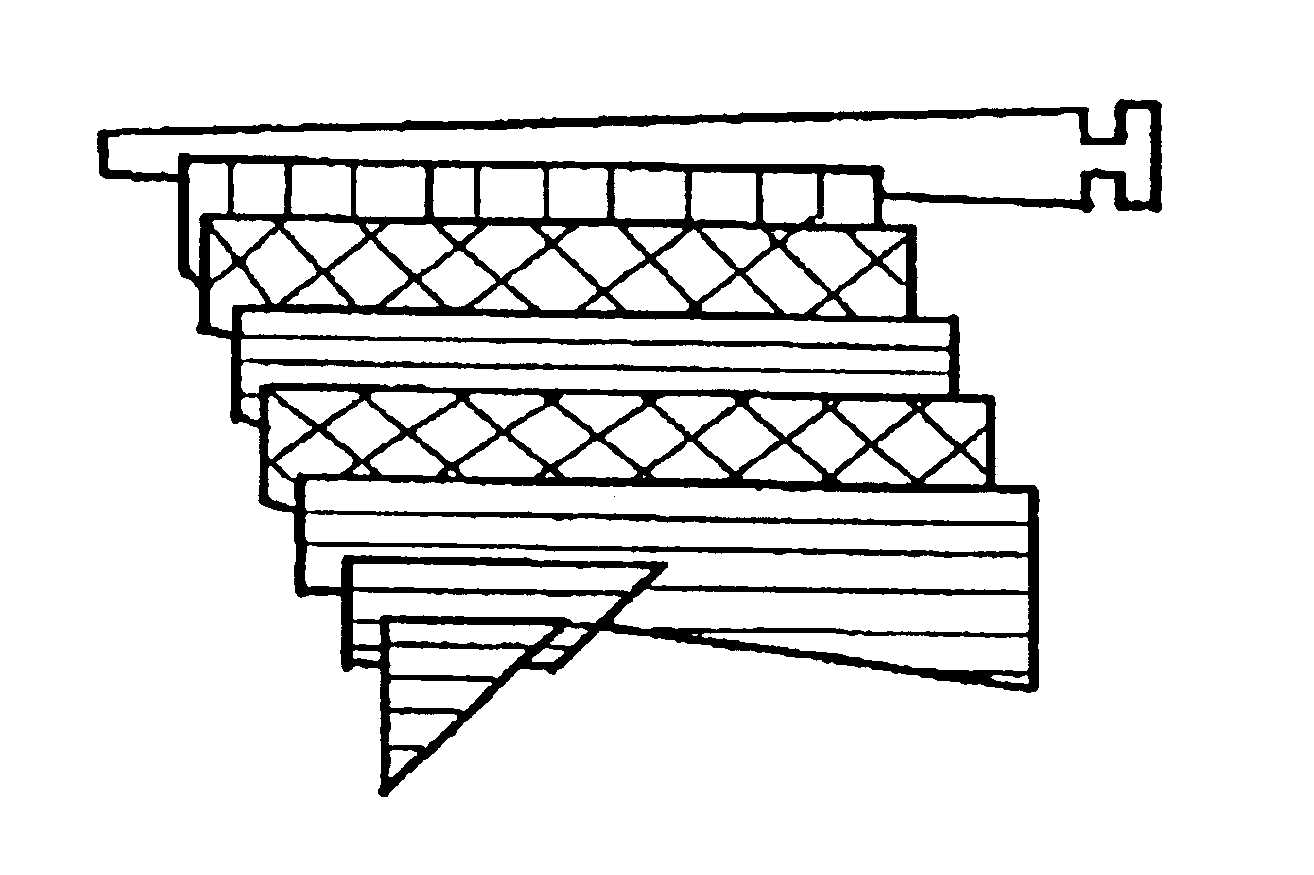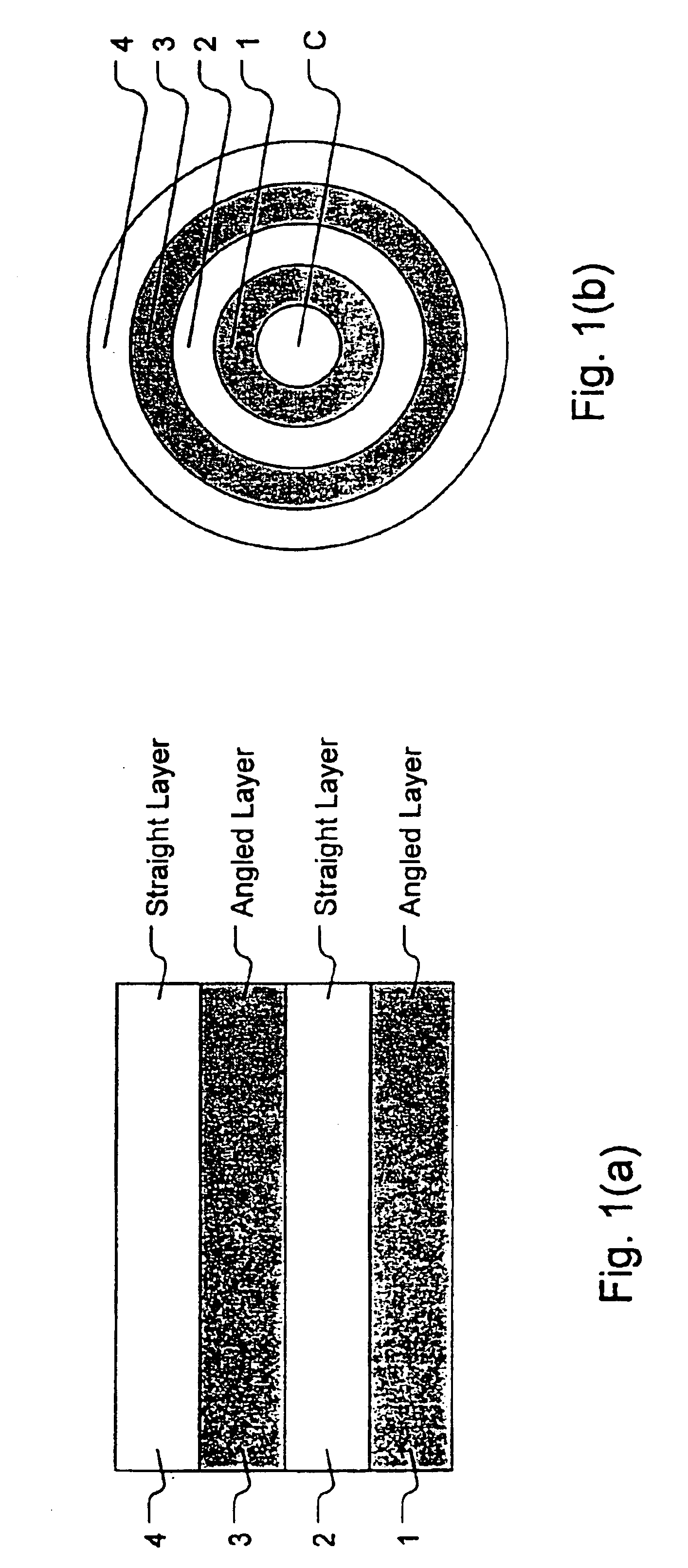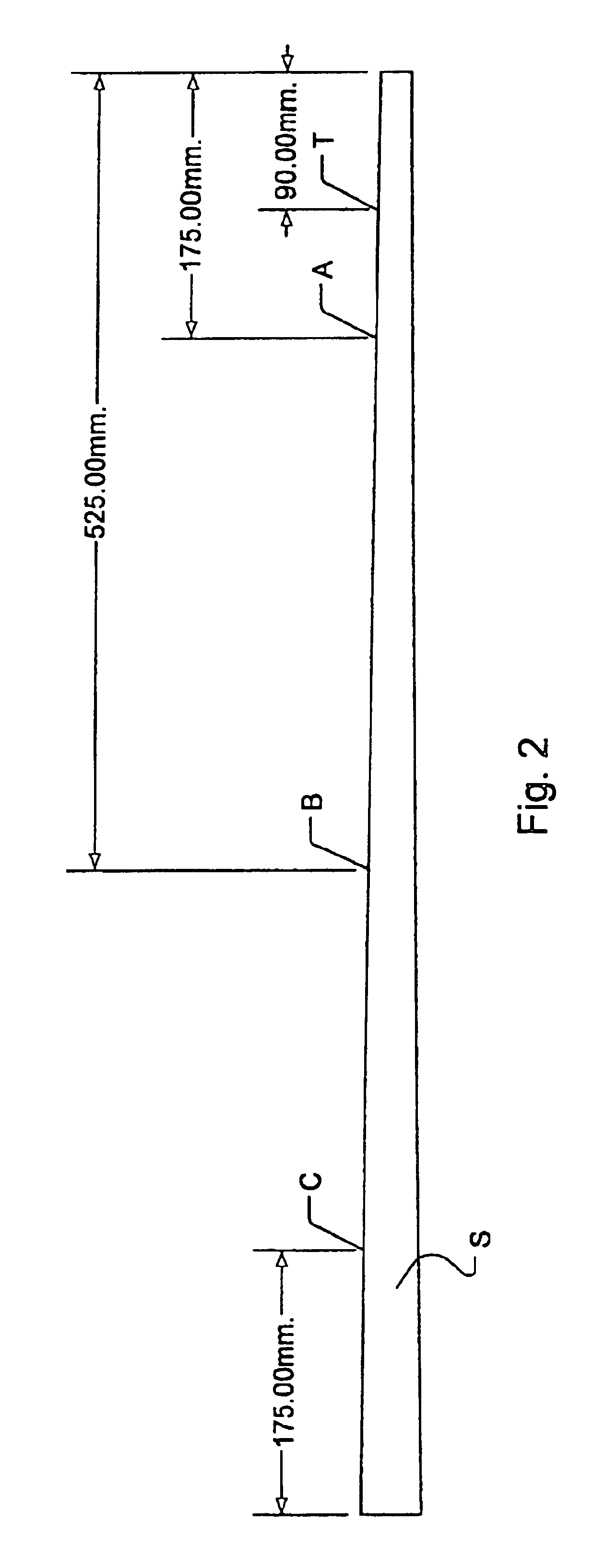Shaft for light-weight golf clubs
a golf club and shaft technology, applied in the direction of golf clubs, pedestrian/occupant safety arrangements, vehicular safety arrangements, etc., can solve the problems of low strength and rigidity low strength of reinforcing fibers with high elasticity, etc., to prevent longitudinal cracking of materials and improve rigidity and strength.
- Summary
- Abstract
- Description
- Claims
- Application Information
AI Technical Summary
Benefits of technology
Problems solved by technology
Method used
Image
Examples
embodiment 1
(1) A 90-degree reinforcing layer is formed as in step 1 of embodiment 1 discussed above (prepreg D in Table I).
(2) A first angled layer is formed as in step 2 of embodiment 1 discussed above (prepreg A in Table I).
(3) A first straight layer is formed as in step 3 of embodiment 1 discussed above (prepreg B in Table I).
(4) Two prepregs are each formed from single layers of fiber material (prepreg C in Table I). The fibers contained in the first prepreg are oriented at an angle of +20 degrees relative to the longitudinal axis of the shaft. The fist prepreg is sheared so that a single layer is formed at both the small-diameter end and the large-diameter end of the material. The second prepreg contains fibers that are oriented at an angle of -20 degrees relative to the longitudinal axis of the shaft. The second prepreg is sheared in same manner as the first prepreg. The two sheared prepregs are adhesively bonded together to form a single bonded material, such that the fibers from the tw...
embodiments 2-4
In embodiments 2-4 and comparative examples 3-4, the prepreg used to form the first angled layer is changed from prepreg A to prepreg G (see Table I). The second angled layer is formed from prepreg C. Each angled layer is formed by adhesively bonding two prepregs together as in step 4 of embodiment 1. The fiber orientation of the two prepregs used in each embodiment is described below.
embodiment 2
In embodiment 2, the second angled layer is replaced with an angled layer consisting of two prepreg layers which are oriented at angles of + / -45 degrees respectively.
PUM
| Property | Measurement | Unit |
|---|---|---|
| Weight | aaaaa | aaaaa |
| Fraction | aaaaa | aaaaa |
| Thickness | aaaaa | aaaaa |
Abstract
Description
Claims
Application Information
 Login to View More
Login to View More - R&D
- Intellectual Property
- Life Sciences
- Materials
- Tech Scout
- Unparalleled Data Quality
- Higher Quality Content
- 60% Fewer Hallucinations
Browse by: Latest US Patents, China's latest patents, Technical Efficacy Thesaurus, Application Domain, Technology Topic, Popular Technical Reports.
© 2025 PatSnap. All rights reserved.Legal|Privacy policy|Modern Slavery Act Transparency Statement|Sitemap|About US| Contact US: help@patsnap.com



